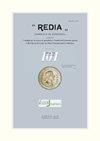在意大利南部郊区建立蛾类长期监测计划:2019-2021年的初步结果(鳞翅目昆虫)
IF 0.6
4区 生物学
Q3 ZOOLOGY
引用次数: 0
摘要
为了调查生态系统动力学和气候变化之间的关系,人们越来越需要长期监测计划。大多数活跃的LTMP专注于非生物参数和植被,是很少被包括在连续采样中的动物。在这篇论文中,我们描述了2019年在意大利南部卡拉布里亚克拉蒂山谷郊区开始的涉及夜间大型鳞翅目(包括Cossoidea和Hepialoidea)的LTMP的前两年的结果。在林业和木材研究中心的实验农场里,设置了两个光阱,每天晚上都在运行。在前两年的监测中,共统计了属于297个分类群的12164个个体,显示出与在地中海气候和耕地的其他卡拉布里亚地区观察到的群落相似的群落。正如对喜潮性物种的观察所表明的那样,河岸森林的小型残余物的存在对群落组成有很大贡献。其中,Xanthia ocellaris和Leucania obsoleta以前从未在卡拉布里亚地区发现过。此外,在调查不力的克拉蒂山谷动物群中增加了177个物种。所提供的结果为调查一个地区在短期人类压力和长期气候驱动的变化下的生态系统变化提供了坚实的基础。关键词:光陷阱,河岸森林,生物指示剂,气候变化,地中海盆地本文章由计算机程序翻译,如有差异,请以英文原文为准。
ESTABLISHMENT OF A LONG-TERM MONITORING PROGRAM OF MOTHS IN A SUBURBAN AREA OF SOUTH ITALY: FIRST RESULTS OF THE YEARS 2019-2021 (INSECTA LEPIDOPTERA)
Long term monitoring programs (LTMPs) are increasingly demanded for investigating relationships between ecosystem dynamics and climate change. Most of active LTMPs are focussed on abiotic parameters and vegetation, being animals rarely included in continuous samplings. In this paper we described the results of the first two years of a LTMP involving nocturnal macrolepidoptera (including Cossoidea and Hepialoidea) started in 2019 in a suburban area of the Crati Valley, Calabria, South Italy. In the experimental farm of the Research Centre for Forestry and Wood two light traps were settled up, running about every night. During the first two years of monitoring, a total of 12,164 individuals belonging to 297 taxa were counted, showing a community similar to those observed in other Calabrian sites with Mediterranean climate and cultivated areas. The presence of small remnants of riparian forests significantly contributed to the community composition as the observation of hygrophilous species demonstrated. Among them, Xanthia ocellaris and Leucania obsoleta were never found before in the Calabria region. Furthermore, 177 species were added to the poorly investigated Crati Valley fauna. The results presented pose a solid baseline for investigating ecosystem changes of an area submitted to short term anthropic pressures and to long term climate driven changes. Key Words: light traps, riparian forests, bioindicators, climate change, Mediterranean Basin
求助全文
通过发布文献求助,成功后即可免费获取论文全文。
去求助
来源期刊

Redia-Giornale Di Zoologia
ZOOLOGY-
CiteScore
1.20
自引率
20.00%
发文量
18
审稿时长
>12 weeks
期刊介绍:
Redia supports its long history of basic and applied research in entomology and invertebrate zoology in the field of crop and forest tree protection responding at the same time to the increasing need of innovation and technological improvement.
 求助内容:
求助内容: 应助结果提醒方式:
应助结果提醒方式:


